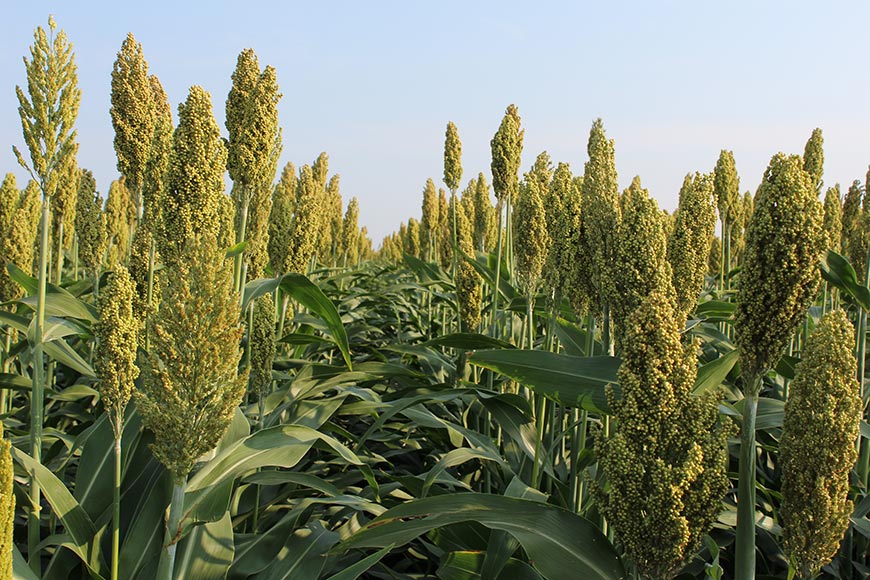Nov 22, 2021
Enlist E3® or XtendFlex® Soybeans: Which Is Right for Your Operation?
Ryan Edwards

In the soybean market, we’ve started to see a shift from single- and double-stacked herbicide-resistant traited varieties to triple-stacked varieties, including Enlist E3® and XtendFlex®. Farmers looking for greater in-season herbicide flexibility are finding these options to be helpful tools in the battle against herbicide-resistant weeds.
At the WinField® United Innovation Center, we’ve focused our research on how to help farmers and applicators optimize spray applications for both these soybean trait platforms. Use these considerations to finalize soybean seed decisions and help your selected trait technology reach its potential.
Regardless of the trait system you choose, you’ll still need a season-long strategy to effectively manage weeds. This includes layering preemergence residual herbicides with multiple modes of action to start clean and tailoring the herbicide program based on the weeds that are most troublesome in your fields.
Adjuvants play an essential role in getting the most effective weed control with both systems. For dicamba applications on XtendFlex soybeans, DRAs and VRAs are required by label. In addition, research conducted at the WinField United Innovation Center showed that including InterLock® adjuvant in the spray tank helps control fine particle drift that DRAs alone cannot. We discovered that including both InterLock adjuvant and a DRA in the tank, along with a water conditioner, reduced driftable fines by 60%.1
Although additional DRAs aren’t required with herbicides used in the Enlist system, our research shows they can still help improve herbicide performance. We’ve found that AMS increases the effectiveness of Liberty® herbicide and that using hard water with Enlist herbicides can increase antagonism in the tank.1 That’s why I recommend adding a water conditioner that contains AMS, such as Class Act® NG®, when spraying Enlist herbicides. Even though Enlist herbicides are formulated with a drift reducing technology, adding InterLock adjuvant to Enlist tank mixes can help optimize droplet size and increase deposition into the crop’s canopy for more effective weed control.
While there’s no clear performance winner when putting Enlist and XtendFlex technologies head to head, we do know that spray practices and overall weed management strategies have a big effect on the success farmers will see with them. To learn more about which soybean trait options are the best fit for your acres, contact your local WinField United retailer.
1Based on research conducted at the WinField United Innovation Center.
All photos are either the property of WinField United or used with permission.
© 2021 WinField United. Important: Before use always read and follow label instructions. Crop performance is dependent on several factors many of which are beyond the control of WinField United, including without limitation, soil type, pest pressures, agronomic practices and weather conditions. Growers are encouraged to consider data from multiple locations, over multiple years and to be mindful of how such agronomic conditions could impact results. Enlist E3, XtendFlex, InterLock, Class Act NG and WinField are trademarks of WinField United. All other trademarks are the property of their respective owners.
At the WinField® United Innovation Center, we’ve focused our research on how to help farmers and applicators optimize spray applications for both these soybean trait platforms. Use these considerations to finalize soybean seed decisions and help your selected trait technology reach its potential.
Enlist E3 soybeans
Enlist E3 soybeans offer resistance to 2,4-D choline, glyphosate and glufosinate. One benefit of the Enlist system is that the label doesn’t require drift-reduction agents (DRAs) or volatility-reduction agents (VRAs), so it may be an easier platform to manage for some farmers. Farmers also have a bit more flexibility with spray tip selection with the Enlist system.XtendFlex soybeans
XtendFlex soybeans offer resistance to dicamba, glyphosate and glufosinate. Because the technology is built on the Roundup Ready® 2 Xtend trait platform, there may be more seed options available than with the Enlist system, and there’s likely more data on performance. Unlike the Enlist system, the XtendFlex soybean label requires a DRA and VRA in the tank mix when spraying dicamba in-season. Tip selection is also more restrictive in the XtendFlex system than in the Enlist system, and there may be more potential for off-target movement with dicamba than 2,4-D.Best spray practices make the difference
There are pros and cons to each system, and you should choose your trait platform based on the genetics you need to be successful as well as the weeds you’re trying to control. Your local agronomist is a great resource to help you understand which system is a good match for your agronomic needs and production preferences.Regardless of the trait system you choose, you’ll still need a season-long strategy to effectively manage weeds. This includes layering preemergence residual herbicides with multiple modes of action to start clean and tailoring the herbicide program based on the weeds that are most troublesome in your fields.
Adjuvants play an essential role in getting the most effective weed control with both systems. For dicamba applications on XtendFlex soybeans, DRAs and VRAs are required by label. In addition, research conducted at the WinField United Innovation Center showed that including InterLock® adjuvant in the spray tank helps control fine particle drift that DRAs alone cannot. We discovered that including both InterLock adjuvant and a DRA in the tank, along with a water conditioner, reduced driftable fines by 60%.1
Although additional DRAs aren’t required with herbicides used in the Enlist system, our research shows they can still help improve herbicide performance. We’ve found that AMS increases the effectiveness of Liberty® herbicide and that using hard water with Enlist herbicides can increase antagonism in the tank.1 That’s why I recommend adding a water conditioner that contains AMS, such as Class Act® NG®, when spraying Enlist herbicides. Even though Enlist herbicides are formulated with a drift reducing technology, adding InterLock adjuvant to Enlist tank mixes can help optimize droplet size and increase deposition into the crop’s canopy for more effective weed control.
While there’s no clear performance winner when putting Enlist and XtendFlex technologies head to head, we do know that spray practices and overall weed management strategies have a big effect on the success farmers will see with them. To learn more about which soybean trait options are the best fit for your acres, contact your local WinField United retailer.
1Based on research conducted at the WinField United Innovation Center.
All photos are either the property of WinField United or used with permission.
© 2021 WinField United. Important: Before use always read and follow label instructions. Crop performance is dependent on several factors many of which are beyond the control of WinField United, including without limitation, soil type, pest pressures, agronomic practices and weather conditions. Growers are encouraged to consider data from multiple locations, over multiple years and to be mindful of how such agronomic conditions could impact results. Enlist E3, XtendFlex, InterLock, Class Act NG and WinField are trademarks of WinField United. All other trademarks are the property of their respective owners.
IF YOU LOVE OUR INSIGHT, YOU’LL LOVE OUR ROI POTENTIAL
Every successful harvest starts with a seed. It just can't end there. Choose which high-performing seed products you’ll start with this season.






